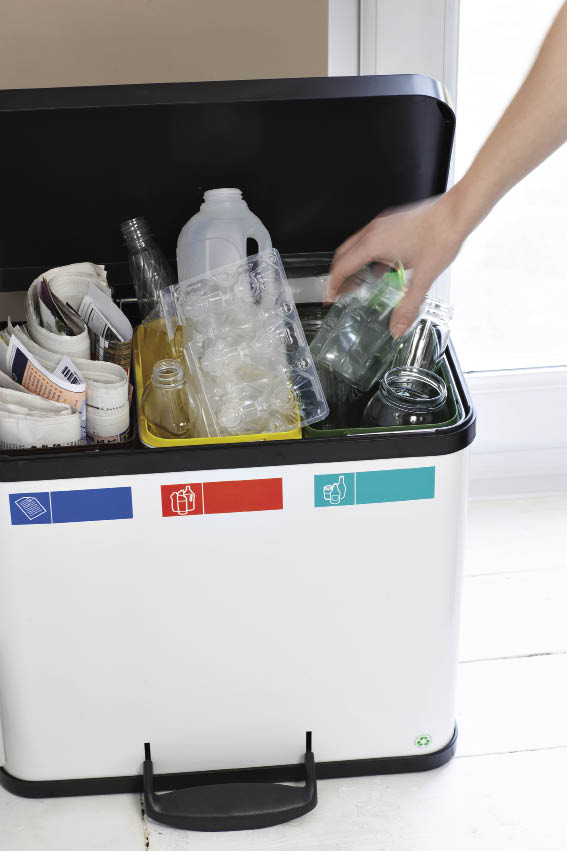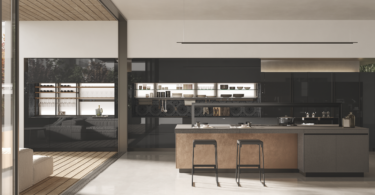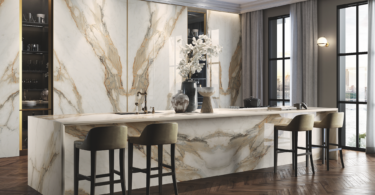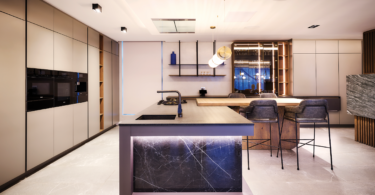An eco-friendly kitchen can help to significantly reduce the carbon footprint of a home. For an existing kitchen the changes can be small and gradual but still have an impact. However if you are starting from scratch you can ensure that every aspect of the space is eco-conscious.
Taking the first steps
For an existing kitchen a good place to start is by reducing your carbon footprint with a home recycling station. Having recycling bins makes it easy for you to organise your household waste. When designing a new kitchen, SieMatic South Africa, for example, has integrated recycling bins in the sink cabinet where it is otherwise difficult to store other items.
Lighting
Another simple step is installing energy-efficient lighting. Shaun Bouchier, the director of Eurolux, explains: “Traditional incandescent lights are a definite no-no for eco-friendly kitchens – these globes consume a lot of energy and give off more heat than light. A quick eco-fix idea for this problem is to replace these globes with compact fluorescent lights (CFLs)”.
Energy efficiency does not mean a compromise on aesthetics, as Melissa Davidson from the Lighting Warehouse explains: “Today, decorative energy-efficient kitchen lighting fixtures are available in every product category; whether you’re looking for something traditional, modern or artsy. The reliable kitchen fluorescent also comes in many more aesthetically pleasing designs.”
Cabinetry and furniture
“There is a definite trend in materials used and we are seeing the use of ‘formaldehyde-free’ lacquers as well as recycled timbers. Ecological furniture is cabinetry defined by the fact that no trees are used, only 100% recycled materials are utilised. The Ecological panel is a high-grade particle board, made exclusively from recycled materials and is therefore friendly both to the consumer and the environment,” explains Philip Richards of blu_line.
A good example of an ecological kitchen is Orange from Snaidero Cucine. “In terms of materials, Orange employs ecological wood taken from sources certified by the Forest Stewardship Council (FSC) which sets the correct balance between cut trees and new trees. The varnishing process operates exclusively on water-based products which drastically reduce the synthetic solvents and totally eliminate the aromatic solvents that are considered highly cancerous. Above all, it employs a new low emission panel, which is made up of wooden particles and has an extremely low formaldehyde emission (less than half compared to the E1 European standard),”explains Sergio Polita, Snaidero Cucine’s kitchen designer.
Countertops
There are several materials that are suitable for counter- tops, and depending on your preference you could choose glass as this is 100% recyclable. If you like the look and feel of wood, bamboo is a good choice as it is renewable and sustainable. If you are looking to use other types of wood, it is important to ensure that it is either recycled or comes from a sustainable forest. Concrete is another good choice as it is durable, is also recyclable and has a low CO² content so it doesn’t give off toxic vapours.
Ground polished concrete can also be used as a flooring option. According to experts from Stonetech: “You should consider changing your countertops to quartz surfaces such as Technistone, which is already more eco-friendly than natural functional kitchen design, carbon footprint, water-saving tapsstone, or better yet you could use PaperStone, which is the only 100% green architectural surface in the world.” Durability means that your kitchen lasts for generations, and Caesarstone’s quartz surfaces, for example, are designed to last a lifetime, offering superb durability for any kitchen surface requirement.
















Leave a Comment